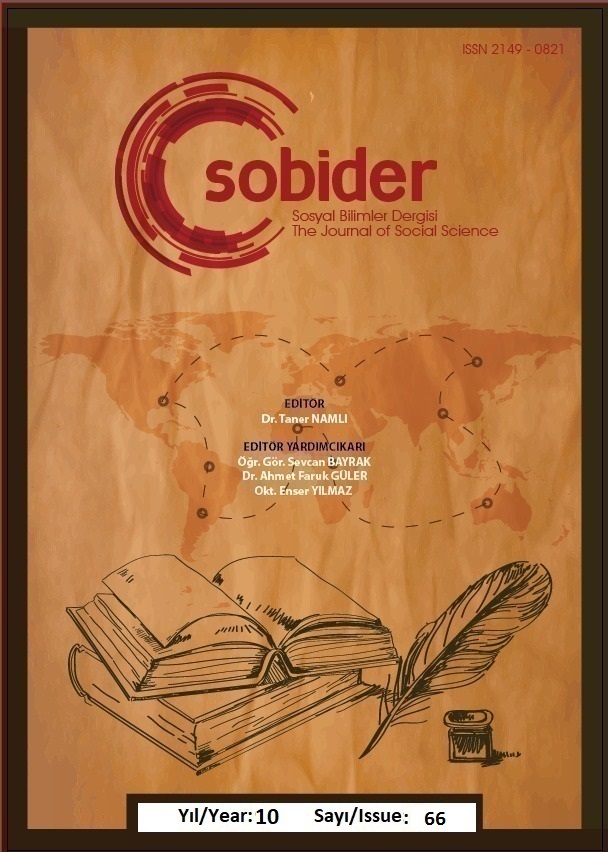Author :
Abstract
Araştırmada, yenilikçi yaklaşımlardan moleküler gastronomi teknikleri kullanılarak Türk kahveli süt helvası geliştirilmiştir. Geliştirilen Türk kahveli süt helvası, modern bir sunum kazanması için Türk kahveli craquelin içerisinde servis edilmiştir. Araştırmanın ilk bölümünde moleküler gastronomi ve kullanılan teknikler ile ilgili olarak alan yazın taraması yapılmış ve Türk kahvesinin yemeklerde nasıl kullanıldığına dair bilgiler derlenerek sunulmuştur. Ulaşılan bilgiler çerçevesinde Türk kahveli süt helvası üretim denemeleri yapılmıştır. Denemeler sonucunda elde edilen ürünlerin görünüş, doku, koku, kıvam, tat ve genel beğeni yönünden değerlendirilebilmesi 5’li likert ölçeği kullanılarak (1= çok kötü, 5= çok iyi) duyusal analiz yöntemlerinden olan kalite derecelendirme testine tabi tutulmuştur. Bu amaçla düzenlenen duyusal analiz formu ile on eğitimli panelistten ürün hakkında görüşlerine ait veriler toplanmıştır. Elde edilen sonuçlara göre ürünün geliştirilmesi gereken yönleri tespit edilmiş veuna yönelik düzenlemeler yapılarak ikinci bir ürün hazırlanmıştır. Son üründe tüm kriterler ortalama değerin üzerinde değerlendirilmiş, genel beğenide ise yüksek bir ortalama (4,7) elde edilmiştir. Yapılan değerlendirmeler sonucu geliştirilen ürünün piyasaya sunulabileceği ve moleküler gastronomi tekniklerinin yöresel yiyeceklerde belli oranlarda kullanılabileceği tespit edilmiştir. Moleküler gastronomi tekniklerinin Türk mutfağına kazandırılmasıyla birlikte, yöresel yemeklerde de moleküler mutfak tekniklerinin kullanılabileceği ve ürünlerin beğenildiği görülmüştür.
[1] Bu çalışma 03.02. 2023 tarihinde Toros Üniversitesi Ulusal Kahve Sempozyumu’nda bildiri olarak sunulmuştur.
Keywords
Abstract
In the research, Turkish coffee milk halva was developed using molecular gastronomy techniques, one of the innovative approaches. The developed Turkish coffee milk halva was served in a Turkish coffee craquelin to give it a modern presentation. In the first part of the research, a literature review was conducted on molecular gastronomy and the techniques used, and information on how Turkish coffee is used in food was compiled and presented. Within the framework of the information obtained, Turkish coffee milk halva production trials were carried out. The products obtained as a result of the trials were subjected to the quality rating test, which is one of the sensory analysis methods, using a 5-point Likert scale (1= very bad, 5= very good) in terms of appearance, texture, smell, consistency, taste and general taste. With the sensory analysis form prepared for this purpose, data were collected from ten trained panelists regarding their opinions about the product. According to the results obtained, the aspects of the product that needed to be improved were identified and a second product was prepared by making adjustments in the recipe accordingly. In the final product, all criteria were evaluated above the average value, and a high average (4.7) was obtained in general appreciation. As a result of the evaluations, it was determined that the developed product can be offered to the market and molecular gastronomy techniques can be used in certain proportions in local foods. With the introduction of molecular gastronomy techniques to Turkish cuisine, it was seen that molecular cuisine techniques can be used in local dishes and the products were appreciated.





